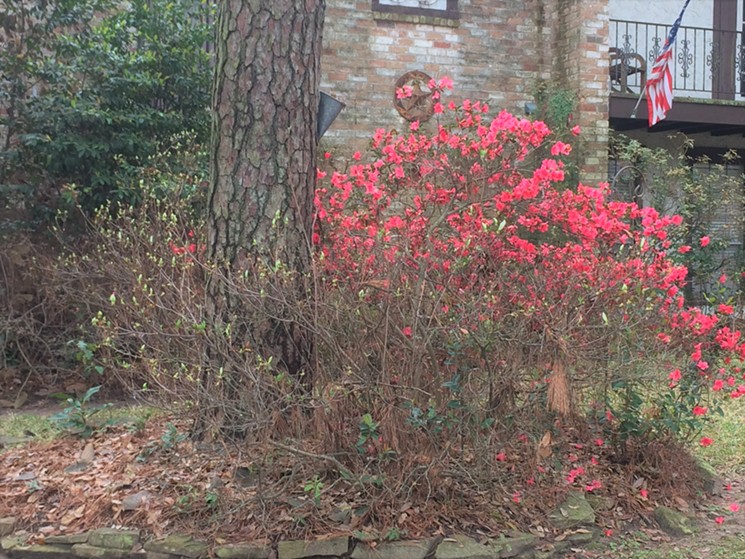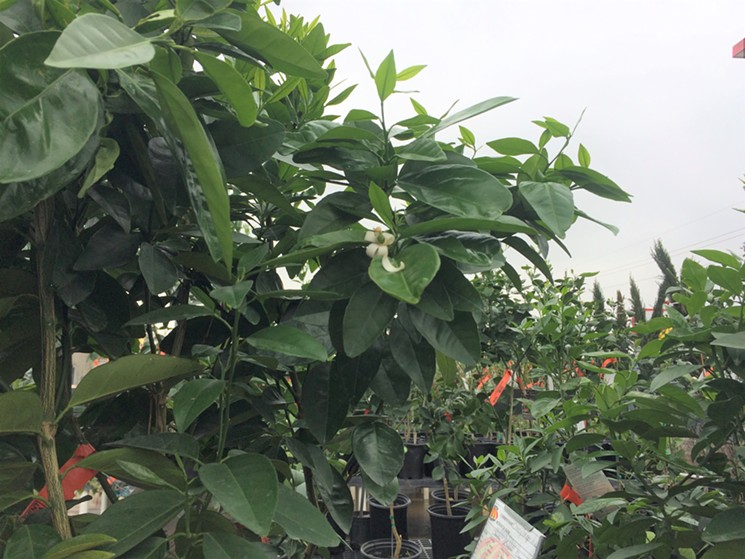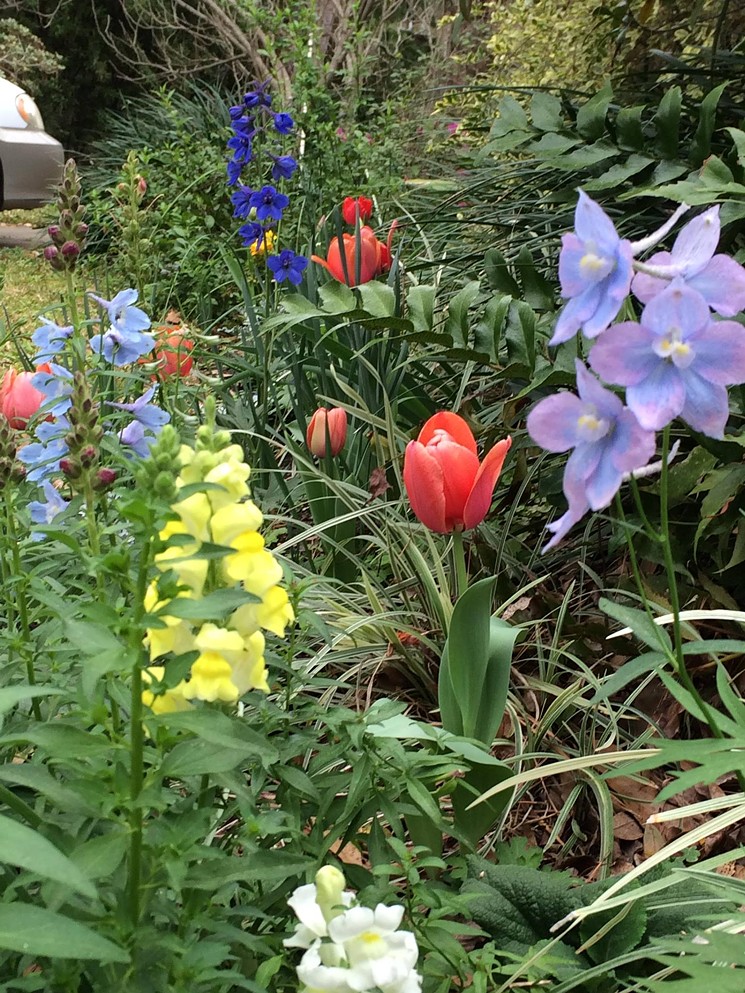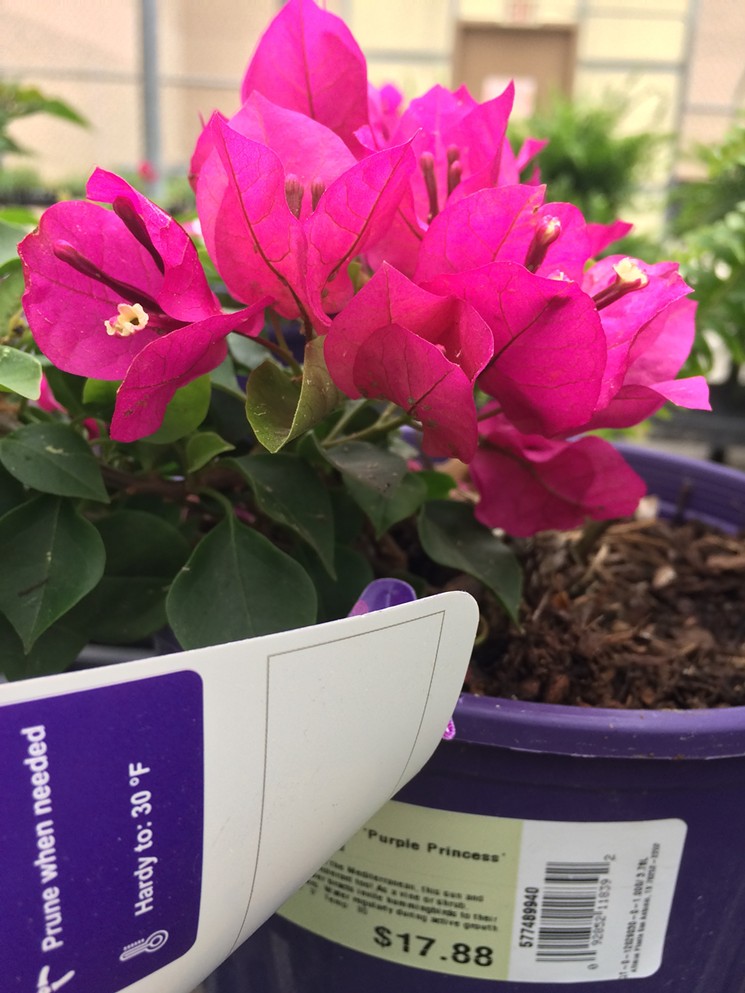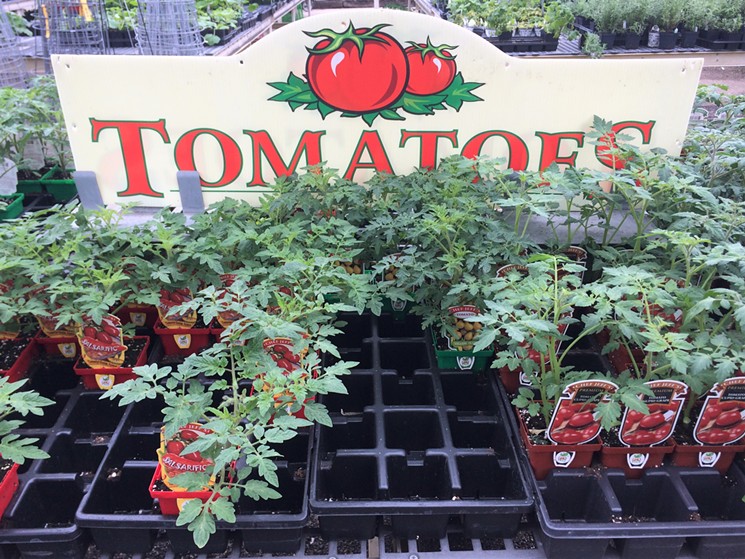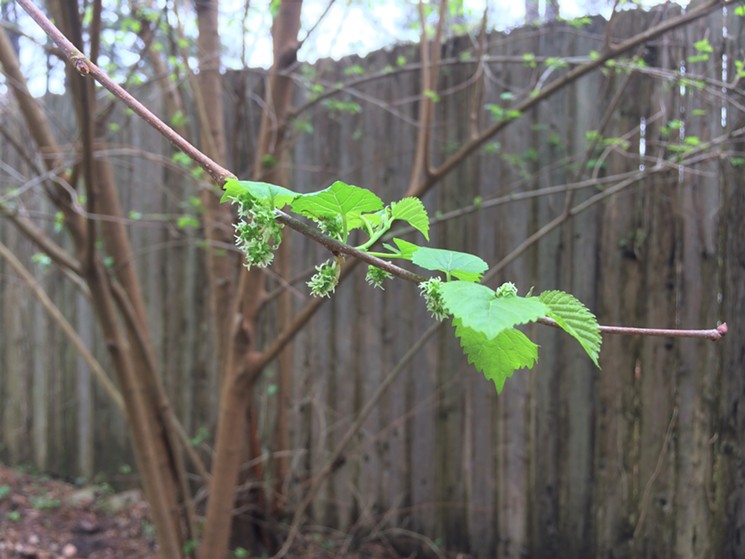Support Us
Houston's independent source of
local news and culture
account
- Welcome,
Insider - Login
- My Account
- My Newsletters
- Contribute
- Contact Us
- Sign out
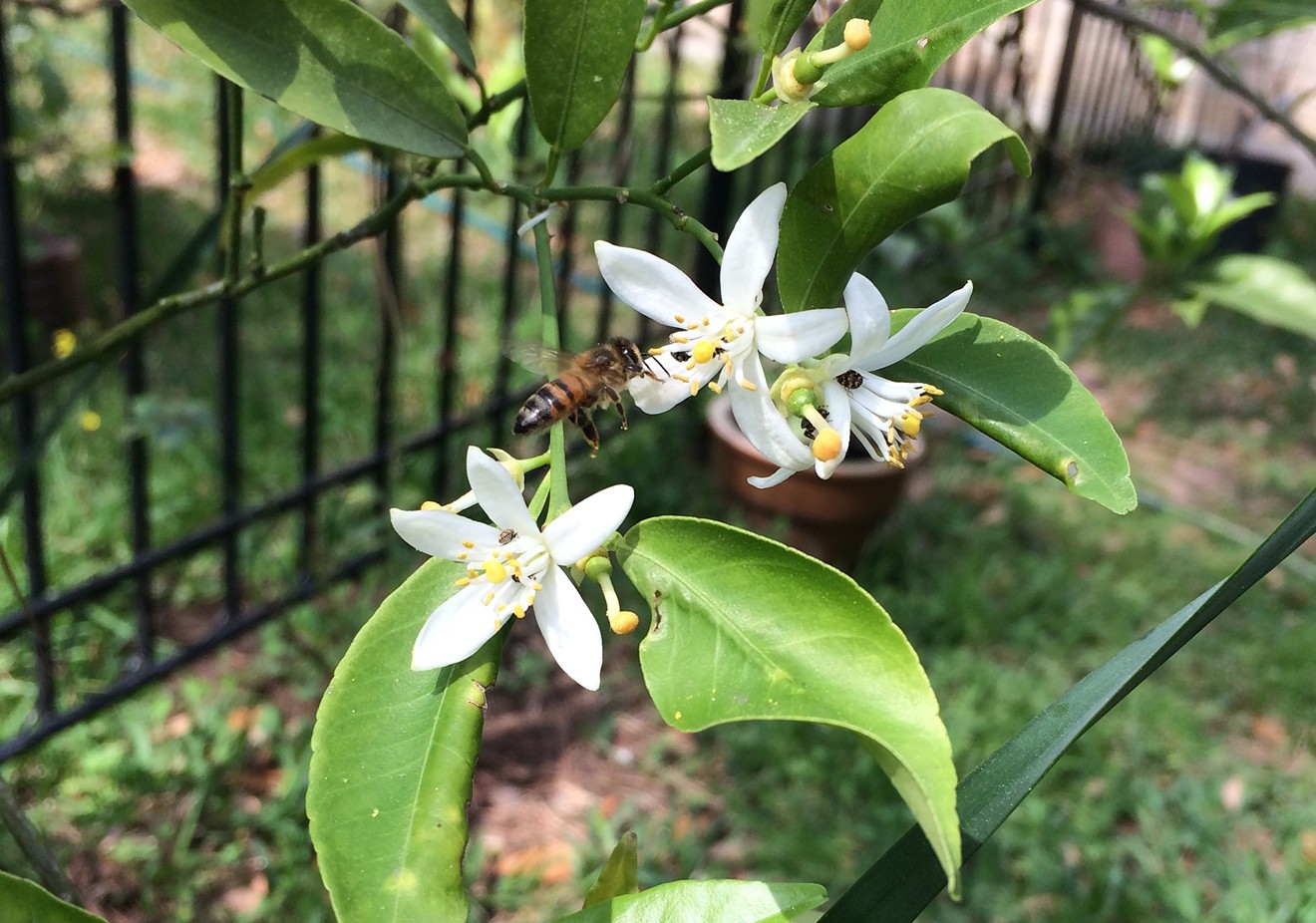
Organic gardening brings all the bees to the yard.
Photo by Lorretta Ruggiero
[
{
"name": "Related Stories / Support Us Combo",
"component": "11591218",
"insertPoint": "4",
"requiredCountToDisplay": "4"
},{
"name": "Air - Billboard - Inline Content",
"component": "11591214",
"insertPoint": "2/3",
"requiredCountToDisplay": "7"
},{
"name": "R1 - Beta - Mobile Only",
"component": "12287027",
"insertPoint": "8",
"requiredCountToDisplay": "8"
},{
"name": "Air - MediumRectangle - Inline Content - Mobile Display Size 2",
"component": "11591215",
"insertPoint": "12",
"requiredCountToDisplay": "12"
},{
"name": "Air - MediumRectangle - Inline Content - Mobile Display Size 2",
"component": "11591215",
"insertPoint": "4th",
"startingPoint": "16",
"requiredCountToDisplay": "12"
}
]
Last week, we wrote about the damage done to our gardens by winter storm Uri, here in the Houston Press. The first couple of weeks after the snow, ice and single-digit temperatures showed a Houston landscape that seemed barren and devoid of life. But nature is an amazing mother. She provides innate protection for many of her progeny. Many trees, shrubs and flowers have already begun to put out their leaves and buds in hopes that the winter weather has passed. It's the annual, eternal promise of spring which awakens all living things, ready to procreate once again. Spring Break often brings out the lust in young people who dance and flirt on sandy beaches in hopes of luring a partner. Spring Break for plants and animals is no different.
Our botanical brethren have the same biological urges that we do and that is the desire to reproduce so that the genes are multiplied, ensuring survival. Birds and other animals eat fruits, berries and seeds which then get dispersed through their excrement, an efficient way to multiply. Human beings also save seeds from plants. We plant them for food, pleasure, shade and curb appeal. We enable the survival of plants for our own interest.
The weather in Houston has already begun to warm and despite the pandemic, a trip to any garden center is a madhouse right now as homeowners look to replace dead shrubbery and vegetable gardeners scramble to get tomato plants in before it's too late. The local news has been filled with advice on holding back and letting plants do their best to recuperate. That advice has paid off for many of us. Certainly, there are things that are completely gone for good. I am still not sure about my Sago Palm or Oleander but some azaleas in my neighborhood actually have blooms and many shrubs that have dropped a multitude of leaves are replacing them with bright green growth, unfurling in the sun and giving us a sense that life doesn't just go on. It also offers new opportunities for growth, botanically and spiritually.
So, put on your mask and make a trip to a garden center, big box behemoth or even the grocery store. Get some seeds. Buy some plants. Grab a few bags of good soil and get growing, Houston. We have a few tips on where to begin.
Replacing shrubs and trees:
First of all, make sure any foundation plantings in your yard are actually past redemption before removing them. Then, decide what it is you actually want for your home's curb appeal. Some people like a cottage garden of blooming flowers, twining vines and a mix of annuals and perennials. Others prefer a few shrubs and lots of mulch. Landscape designers are great for those with the funds but most of us have to rely on ourselves. Gardening reference books and websites offer a ton of information. And just like vacations, part of the fun is the planning.
Most homeowners in the South have azaleas and crape myrtles, though neither one is native. Many of us have inherited them with our homes so they are here to stay. However, there are also native plants that can be attractive as well as provide food and shelter for birds and butterflies. Texas Sage has pretty purple flowers and is drought resistant. Texas Mountain Laurel can be grown as a specimen and has long purple, grape candy-scented blooms. Its seeds however, are poisonous, so always consider the location of plants that can be toxic to children and pets. For more information on natives for our area, check out The Native Plant Society of Texas. It also has a Houston chapter.
Above all, practice a little patience. It doesn't have to be done all at once. Currently, the garden centers and big box stores around Houston are experiencing high demand and they are charging high prices, too. For those wanting to replace citrus and fruit trees, they are ten to twenty dollars more expensive this year. And pickings are pretty slim. Later in the season, bargain hunters may find deals. Also, fall is a wonderful time to plant shrubs, trees and roses in Houston for those who can wait.
Flower Power:
The freeze happened just as the stores and shops were getting ready to put out their vegetable seedlings and flats of annuals for spring. Though many seem to have plenty of stock, stores may sell out of favorites. Houston gardeners may have to opt for new varieties.
While filling flower beds full of annuals can be rather expensive, a few petunias, verbena and snapdragons can provide quick color. Some annuals can actually survive more than one season in Houston. I have had nicotiana, jacobinia (justicia carnea), wax begonias and dianthus survive for two or three seasons. Gerbera daisies that are often considered annuals in other states are perennials here. I have two Gerberas planted at my mailbox that are going on their tenth season. I thought they were finally killed by the hard freeze but they are putting out new growth and even a bloom. Purple Homestead verbena is another annual that surprisingly survived the snow and ice.
Seeds are a thrifty way to get some color in your garden but most take about three months from seed to bloom. Zinnias, cosmos and cleome are three easy-to-grow options for Houston. Zinnias are susceptible to mildew and cleome has a pungent smell but the pros outweigh the cons in the Houston garden. For those who love English cottage flowers, the best time of year to plant seeds is in the fall for larkspur, Canterbury bells and hollyhocks. Biennials from seed need two seasons typically but in Houston, they can sometimes bloom in the spring if the seeds are sown in the fall.
Bulbs are also an inexpensive way to get some gorgeous color in the summer garden. Gladiolus may seem like an old-fashioned plant to some but they are easy to grow. They may need to be staked so prepare for that when planting the bulbs. Dahlias can be more expensive but boy, do they get some attention when they bloom. I have had some mixed luck with anemones and ranunculus but when there's success, they are stunning.
Edible delights:
Gardening can be a happy addiction and growing one's own food can be fun as well as nutritious. Like any other form of gardening, there are pests and diseases that thwart the gardener's mission but a vine-ripened tomato or raw peas eaten straight from the pod are simple pleasures that can only be enjoyed from one's own efforts.
Many Houston gardeners start tomato seeds in January to have them ready for a mid to late February planting. This year, most of us are getting our seedlings in much later than usual. My January seedlings struggled to survive so I bought several tomato plants and planted them a couple of weeks ago. It may be too late for some heirloom tomato plants (they do not like our summer heat) but a Sungold or Sweet Chelsea cherry tomato should produce well into June. There's also time to plant an Early Girl or a Big Beef for slicers. I am trying Homestead 24 for the first time this year because it is supposed to fare well in hot, humid climates. For canning or putting up sauce, try a determinate Roma or other paste tomato which produces most of its fruit at one time.
Pepper plants are ready to be set out now as well as cucumber and squash plants. Personally, I like to direct sow cucumbers and summer squash from seed because they germinate quickly and they really don't like being transplanted. It may be late for beets and carrots but if you have the seeds already, give them a shot. Radishes prefer colder weather but they grow so quickly, you could have a harvest in a month or so before it gets too hot. If you like radishes.
One of the easiest and fastest plants to grow are beans. They usually germinate in less than a week. You'll see the seed beginning to emerge, then a few hours later, it's a plant. They can grow several inches in one day so they provide almost instant gratification for wee gardeners and grown-ups too. Baker Creek Heirloom Seeds has a wide variety from prolific green beans like Contender to beautiful beans such as Dragon Tongue with its purple stripes. I plant six to eight of each every couple of weeks so that I don't get too many at one time. This is called succession sowing which is great for having fresh vegetables over a long period. Those who like to put up their harvests can plant many seeds at one time to get a large amount for freezing or canning.
Try planting a mixed packet of lettuce or mesclun for fresh greens. While lettuce, kale and spinach prefer cooler temps, a spot in the garden out of the late afternoon sun or a pot that can be moved into the shade occasionally can still produce some leaves for salads or just enough to grab for sandwiches and burgers. For heat-loving basil, a mixed packet of different varieties can yield so many plants that you will be making pesto and Thai curries all summer and into fall. I had a bounty of Thai basil from seed this year and its pretty purple flowers drew in loads of honeybees. If let go to seed, basil, cilantro and parsley will reward gardeners for years with self-sown seedlings. It's important to recognize them when they emerge so that they don't get pulled up as weeds.
Because of the boom in backyard vegetable growing and farmers markets, there's a wealth of information about growing food online. In Houston, one of the best resources is Urban Harvest, a local organization focused on gardening and food production. Its website offers informational videos and a calendar of its gardening classes. It also has an "Ask a Gardening Question" feature. Right now, it is offering a chance to donate to local farms that have been severely affected by the winter freeze.
This has been a difficult year. For many, it has been a year of loneliness, fear, sorrow and anger at varying times. Many of us have experienced job losses or financial difficulties. Some of us have lost friends, family and colleagues this year, be it to COVID, cancer or heart disease. There are the lucky few for whom this past year has just been inconvenient. But most of us have experienced some profound changes in our daily lives. Planting a garden or growing some flowers will not make all those hurts go away but nurturing a living thing, be it human animal or plant, can be a balm for those pains.
KEEP THE HOUSTON PRESS FREE...
Since we started the Houston Press, it has been defined as the free, independent voice of Houston, and we'd like to keep it that way. With local media under siege, it's more important than ever for us to rally support behind funding our local journalism. You can help by participating in our "I Support" program, allowing us to keep offering readers access to our incisive coverage of local news, food and culture with no paywalls.
Lorretta Ruggiero is a Houston Press freelance writer based in Cypress, Texas. She loves entertaining her family and friends with her food and sparkling wit. She is married to Classic Rock Bob and they have two exceptionally smart-aleck children.
Contact:
Lorretta Ruggiero
Trending Arts & Culture
- Bring a Friend With You to See A.D. Players' Heartwarming Production of Driving Miss Daisy.
- Best Bets: Latin Wave, California Gold and Philly Soul
- Houston Grand Opera's The Sound of Music Begins This Weekend. Yodelayheehoo!
-
Sponsored Content From: [%sponsoredBy%]
[%title%]

Don't Miss Out
SIGN UP for the latest
arts & culture
news, free stuff and more!
Become a member to support the independent voice of Houston
and help keep the future of the Houston Press FREE
Use of this website constitutes acceptance of our
terms of use,
our cookies policy, and our
privacy policy
The Houston Press may earn a portion of sales from products & services purchased through links on our site from our
affiliate partners.
©2024
Houston Press, LP. All rights reserved.


